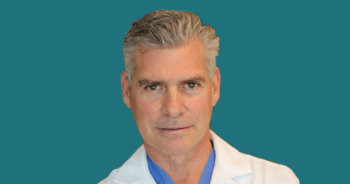
Using Single Cell Sequencing for Gene Editing Quality Control
Anjali Pradhan, MS, the chief product officer at Mission Bio discussed the company’s Genome Editing Solution.
Off-target edits can pose safety risks during the use of gene editing therapies. Although, detecting these edits precisely and accurately can prove difficult with traditional bulk DNA sequencing.
Mission Bio's Tapestri Genome Editing Solution, which uses DNA sequencing to detect gene edits at a single cell level, is intended to overcome this challenge. Notably, the company presented on Tapestri at
CGTLive: Can you give some background about what you presented at ASGCT this year?
Anjali Pradhan, MS: We were really excited that we have launched our genome editing solution. What this is, is a genome editing solution that helps you quality control your edits and your genes as you do a CRISPR edit or a prime edit, using various editing tools. Our solution is a unique solution because it's the only DNA single cell solution that allows you to do on-targets, off-targets, translocations, measures zygosity of edits, as well as—we're excited to introduce—looks at copy number variations. Our whole product solution is available for users who are using prime editing tools, etc. and looking at what the efficiency of gene editing is, so that they can safety control their product as it goes into a patient.
What were the key points you presented?
Mission Bio is a DNA single cell company. Our tools are an instrument platform that is based on microfluidics. We have also worked with the National Institute of Standards and Technology (NIST) Consortium. Our collaboration has really helped us to emphasize the value of looking at these edits at a single cell level. Our presentation was focused on highlighting when they compared in an interlab study what the value was of our Tapestri platform, our instrument for measuring single cell edits. What it highlighted is looking at attributes like single cell zygosity, looking at translocation events, off-target edits, and on-target edits.
How would you summarize the big picture implications that doctors and the healthcare community should take away from this?
What we've seen is in the industry today there's a lot of excitement with new editing technologies—there's various new technologies coming out. But what you are always concerned about is: What is the safety of those edits? How can you be sure that your edit is as it was intended to be and if it's going in the right place? That's a huge concern to doctors, especially with various editing efficiencies, etc. How do you make sure you're doing the right thing? The FDA also requires you to report out where those edits are and what's the frequency of these edits. So you need the right single cell level tool to measure that accuracy. That's where Mission Bio can really help you to do that quality control (QC), to make sure again that all the critical attributes are safe, your editing efficiency is safe, and you can feel much more confident about where those edits are made.
Have there been any major challenges in this work so far?
I think the challenge continues to be in measuring the safety. But what is continually exciting for the community is as the various forms of editing continue to expand, there will always be checks and balances required to measure the safety. As such, I think as you think about more tools in the editing space, you can also see the scope of looking at those tools at a single cell level. The highlight is you have to use your cell as your most accurate level at a macro level. When you're using other tools like bulk sequencing or PCR, you're measuring at a bulk level, so you don't get the granularity when cells as we know are heterogeneous. The challenge is the heterogeneity of cells and this is why you should always use a single cell and then DNA single cell level methods to help measure the QC.
Is there anything else you would like to share?
I think our goal as a company with Mission Bio is with our DNA single cell tools and technology, we are enabling the community to do safety and efficacy of gene editing. We also have solutions for characterizing cell therapeutic products. Our goal is to work with the community to really build out the right tools. Our vision is to become sort of more of a standardization practice, partnering with institutes like NIST and the FDA, where we can really help ensure safety and efficacy, especially because so many of these edits, if they're not done and measured correctly, can lead to genotoxicity. That's what we want to avoid and enables safety and more precision medicine.
This transcript has been edited for clarity.
Newsletter
Stay at the forefront of cutting-edge science with CGT—your direct line to expert insights, breakthrough data, and real-time coverage of the latest advancements in cell and gene therapy.











































